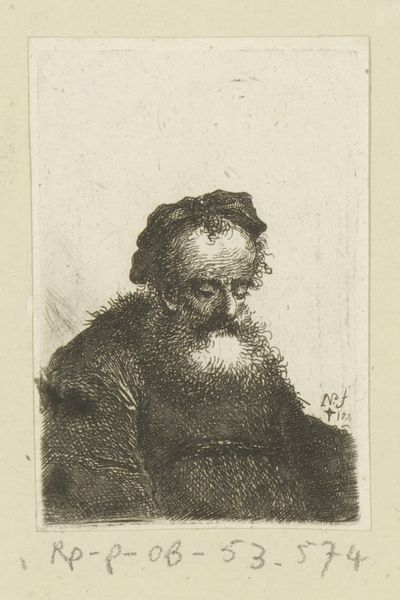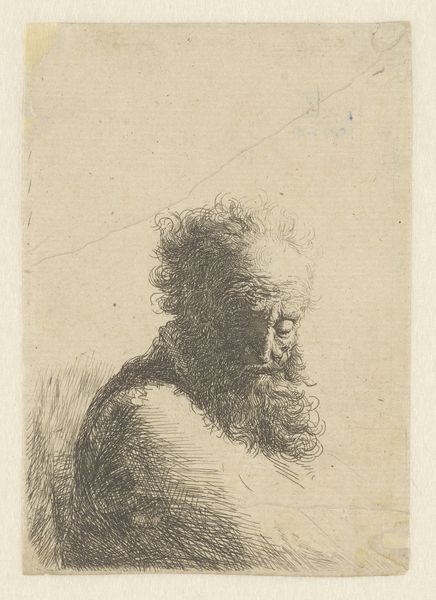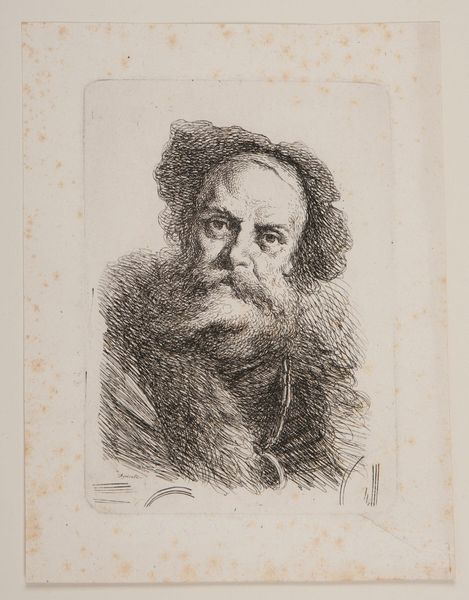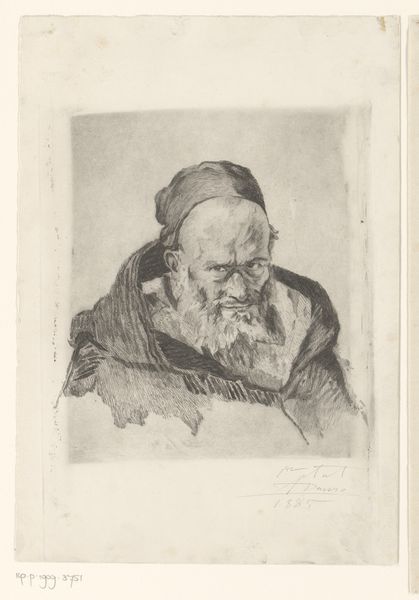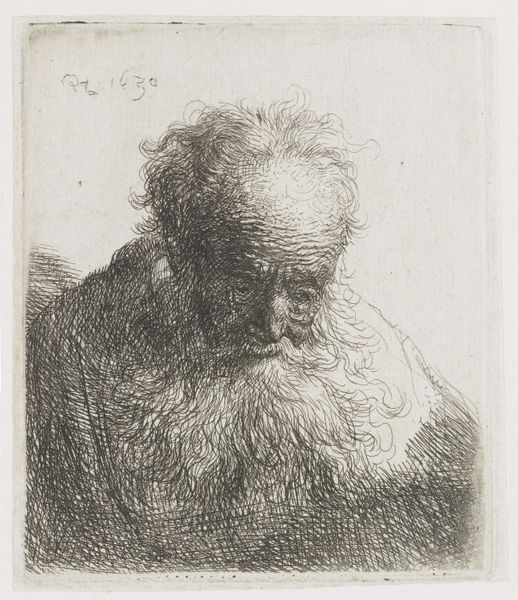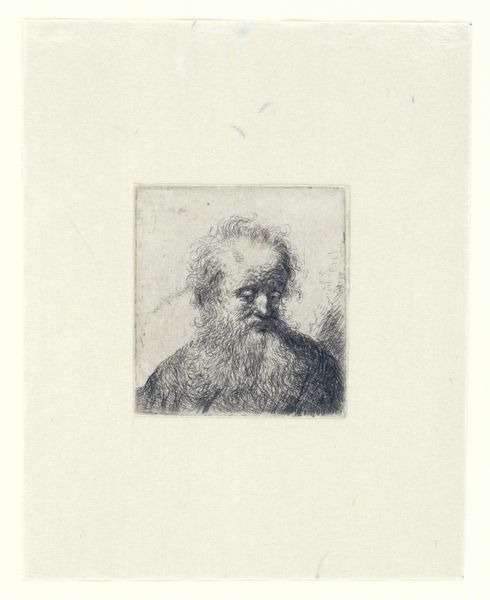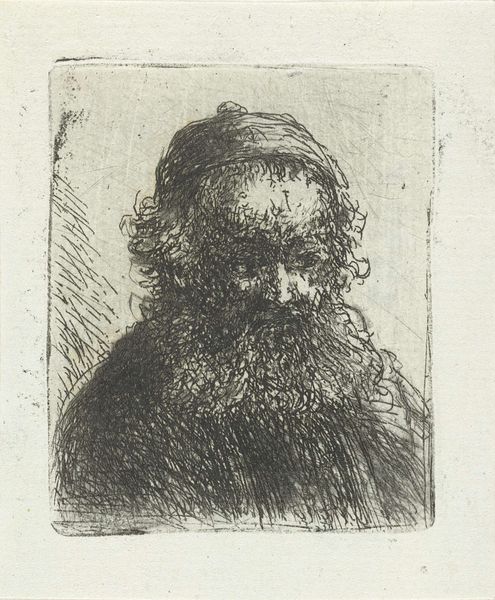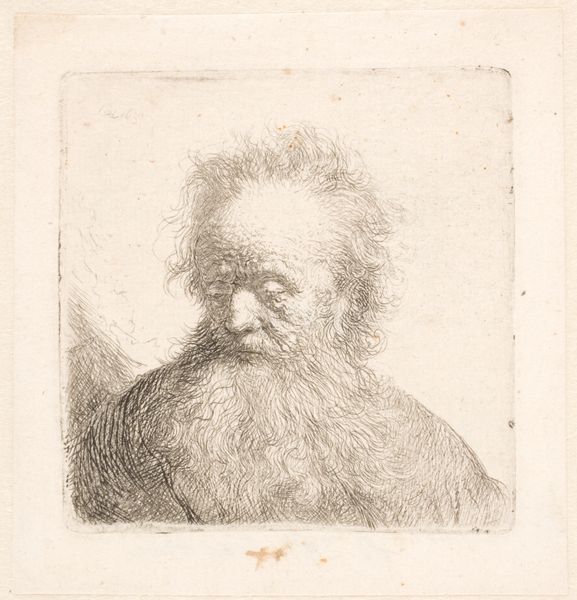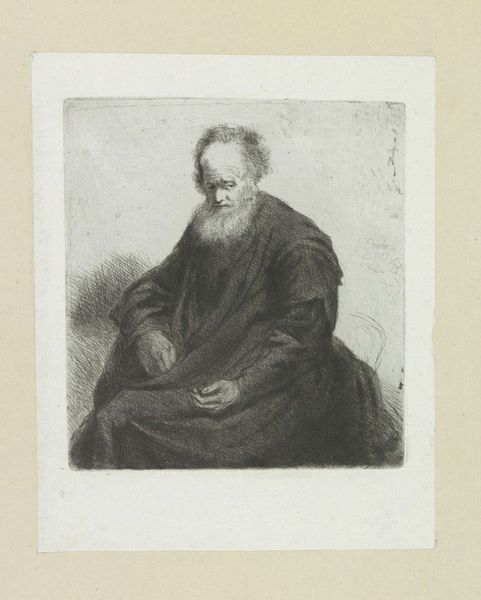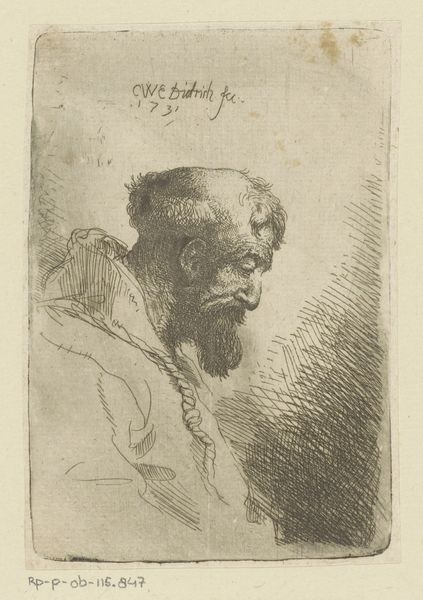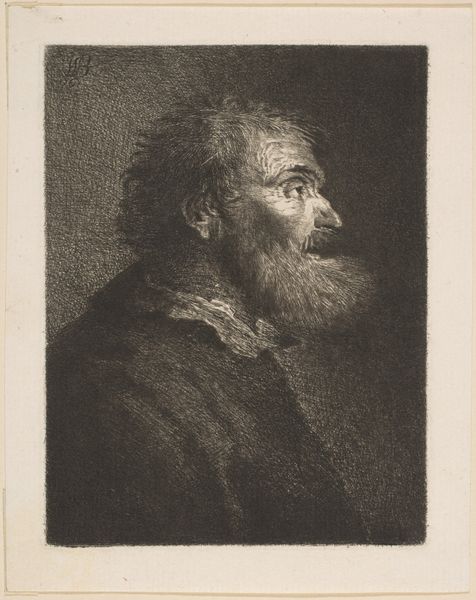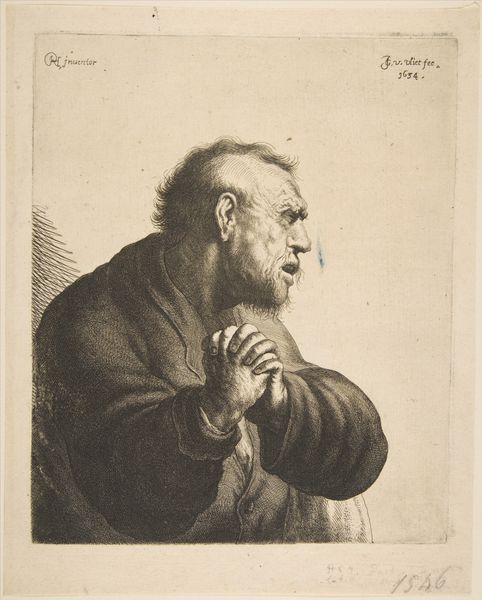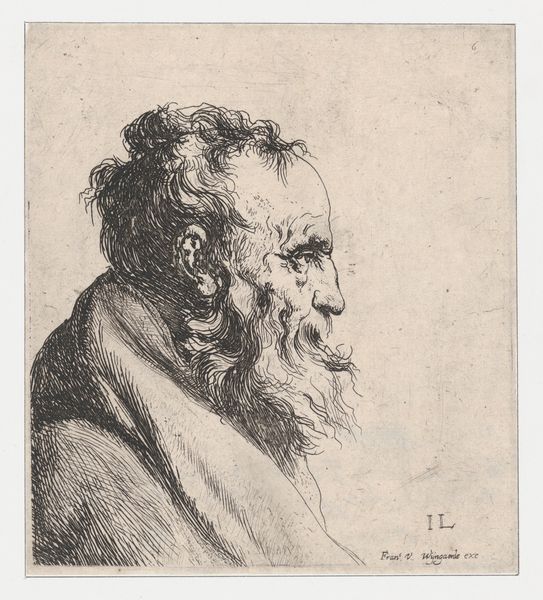
Dimensions: height 82 mm, width 54 mm
Copyright: Rijks Museum: Open Domain
Curator: Here we have “Man met baard en platte muts,” or “Man with Beard and Flat Cap,” an engraving by Johann Andreas Benjamin Nothnagel, dating to 1771. Editor: The first impression is one of subdued melancholy. The figure seems burdened, perhaps lost in thought. It has a quietness I wasn't expecting. Curator: Notice the baroque aesthetic despite the engraving’s limited tonal range. Nothnagel masterfully manipulates the etched line to create depth, and a subtle interplay of light and shadow. The density of line gives the texture of the beard and cap a certain weight. Editor: Yes, the cap... and the beard of course, a powerful emblem of wisdom, age, experience. The averted gaze makes the viewer search. What troubles him, what memories does he hold? The entire composition suggests an interior world of contemplation. Curator: His downcast posture indeed directs our eye toward the areas where detail is concentrated. Observe how the hatching diverges, shifts direction to delineate planes and describe textures—the soft fall of the fabric contrasting with the wiry beard, and how that plays against the blank space. Editor: Is he a philosopher, a craftsman, or perhaps a religious figure? This symbolic ambiguity amplifies his universal resonance; his appearance and humble attire reflect the everyday man rather than royalty or clergy. It is a beautiful characterization of introspection. Curator: Precisely. He is individualized by his downcast demeanor, and yet the lack of clear contextual identifiers gives him this archetypal feel. The skill of the engraving also lies in achieving maximum impact with minimal strokes. Editor: So, while on the surface, it’s a simple portrait, it functions as a complex cultural study of internal consciousness. We glimpse at a moment, made all the more timeless through its very ambiguity. Curator: A lovely perspective, which, indeed, opens further ways to observe the intentional deployment of form and meaning—form shaping our reading, informing our affective response to the object itself.
Comments
No comments
Be the first to comment and join the conversation on the ultimate creative platform.
